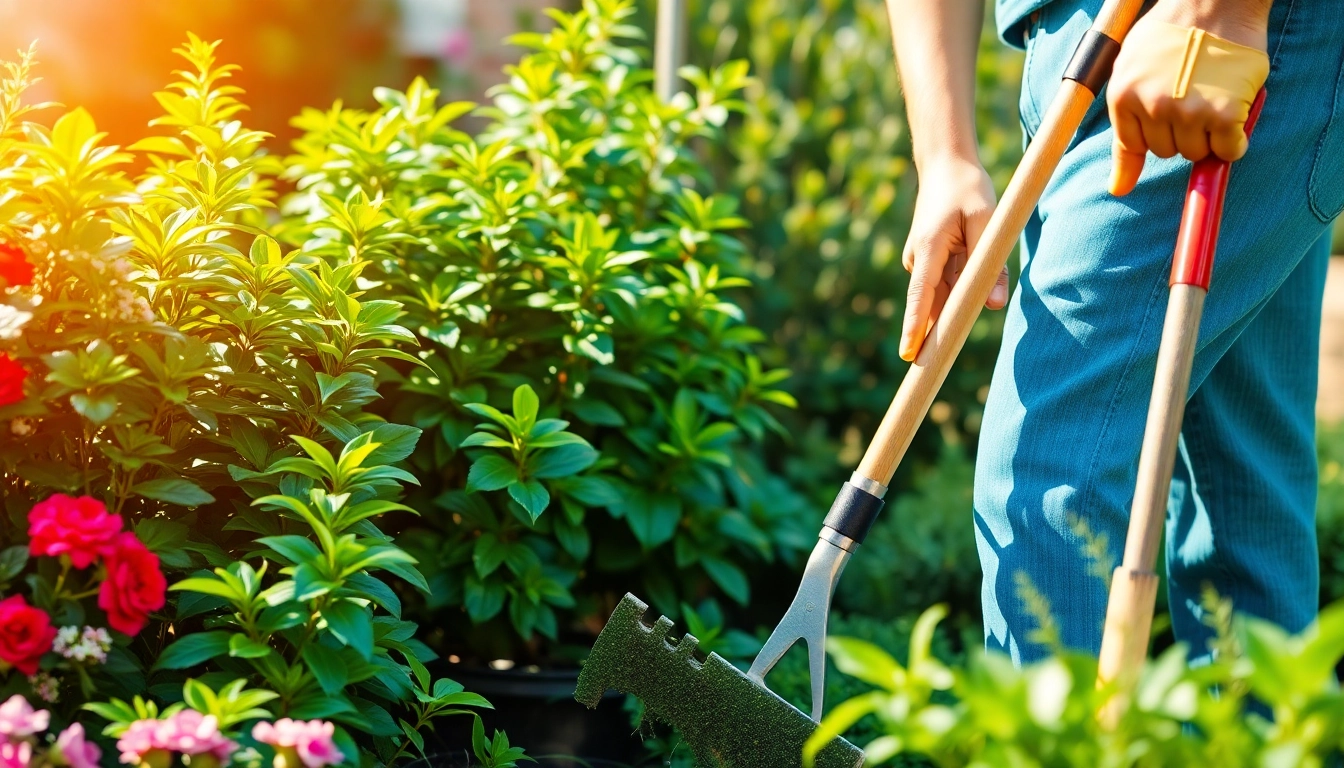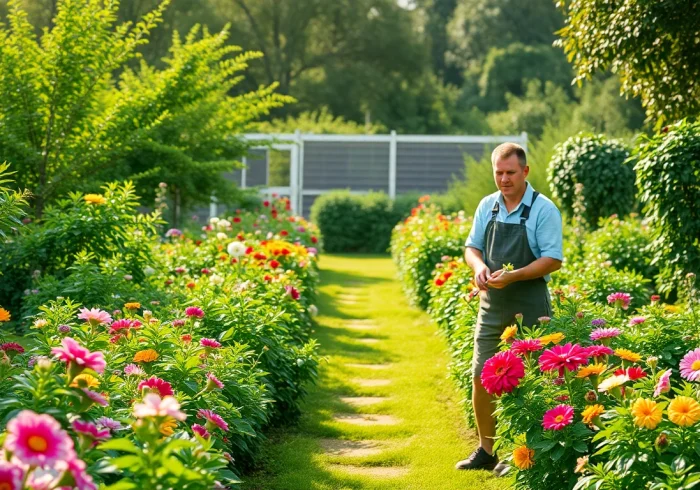Understanding Garden Maintenance Services
What is a Garden Maintenance Service?
A garden maintenance service encompasses a range of professional services aimed at ensuring the health, appearance, and longevity of gardens and outdoor spaces. These services can include routine lawn care, plant care, pest control, and landscape design enhancements. Essentially, garden maintenance is designed for both residential and commercial gardens to maintain their aesthetic appeal and environmental health. For many homeowners or businesses, enlisting a garden maintenance service can mean the difference between a flourishing space and one that falls victim to neglect.
Benefits of Professional Garden Care
Engaging professionals for garden maintenance provides numerous advantages. Firstly, specialists possess the knowledge and experience necessary to identify potential issues before they escalate, such as pest infestations or nutrient deficiencies. Moreover, professional services often come equipped with advanced tools and techniques that can lead to better results than typical DIY methods. Additionally, outsourcing garden care can save valuable time for homeowners or businesses who would prefer to focus on other daily responsibilities. Other benefits include:
- Customized Care: Professionals can offer tailored solutions based on the specific needs of your garden.
- Cost-Effectiveness: Investing in professional services can often reduce long-term costs significant by preventing extensive damage and the need for major repairs.
- Enhanced Aesthetics: With regular maintenance, a garden can reach its full visual potential, improving the property’s overall appeal.
When to Hire a Garden Maintenance Service
Recognizing the right time to hire a garden maintenance service can lead to significant benefits. If you notice that your lawn or garden looks unhealthy or unkempt despite your efforts, it may be time to seek professional help. Other indicators include:
- Overgrown vegetation affecting the overall beauty of your garden.
- Pest problems that seem overwhelming for you to handle.
- A lack of time to properly care for your plants due to other commitments.
Furthermore, seasonal changes often signal the need for increased maintenance. For instance, spring may necessitate fertilizer application, while fall can require extensive leaf removal and preparation for winter.
Common Garden Maintenance Tasks
Lawn Care and Mowing Techniques
Lawn care is foundational to any effective garden maintenance service. This encompasses not only regular mowing but also practices such as aeration, dethatching, and fertilization. The techniques employed can depend on grass types and regional climates.
Mowing needs careful attention to ensure the lawn is cut to a suitable height, allowing for healthy growth while minimizing weed proliferation. For instance, different grass varieties may require different mowing heights, with cool-season grasses thriving at about 2.5 to 4 inches, while warm-season types do well at 1 to 3 inches. It’s critical to avoid cutting more than one-third of the grass height at once to prevent stressing the plants.
Pruning and Trimming Best Practices
Pruning is an essential task in garden maintenance, vital for promoting plant health and encouraging growth. The timing and technique of pruning can significantly affect the health of shrubs and trees. Best practices include:
- Timing: Prune flowering plants based on their flowering cycle—early bloomers after they flower and late bloomers in late winter or early spring.
- Tools: Use sharp and clean tools to minimize damage to plants, and consider lightweight options for ease of use.
- Technique: Cut at a 45-degree angle just above the outward-facing buds to encourage outward growth.
Regularly trimming overgrown branches can also prevent overcrowding, ensuring that plants receive adequate sunlight and air circulation.
Seasonal Planting and Soil Health
Understanding seasonal planting is crucial in maintaining a vibrant garden. Each season offers unique opportunities for planting different types of flora, which can enhance biodiversity in your garden. For instance, spring is ideal for many annuals and perennials, while fall can be the best time for planting trees and shrubs.
Soil health plays an equally essential role in the garden’s overall maintenance. Periodic soil testing helps determine nutrient levels and pH balance. Techniques such as mulching can conserve moisture, suppress weeds, and improve soil structure. Regular composting enriches the soil with organic matter, fostering better plant growth and resilience.
Choosing the Right Garden Maintenance Service
Factors to Consider When Hiring
Choosing the right garden maintenance service involves careful consideration of various factors. Firstly, assess the specific needs of your garden, as different services might specialize in varying areas such as pest management, lawn care, or ornamental maintenance. Other considerations include:
- Experience: Look for companies with established experience in the field, including local expertise.
- Insurance: Ensure that the service provider has appropriate liability insurance to protect against potential damages or accidents during service.
- Range of Services: A versatile maintenance provider can manage various tasks all under one umbrella, which is more convenient.
Comparing Pricing and Services
Pricing in garden maintenance can vary significantly depending on service level, frequency, and the specific tasks required. It is prudent to obtain multiple quotes and compare not just prices but the specifics of the services offered. Some companies might offer bundled services at a discounted rate, which can be beneficial if you have multiple areas requiring attention.
Often, companies may charge based on the size of the area, with additional fees for specialized services. Consider discussing annual maintenance contracts that can provide savings over time through consolidated services.
Checking Credentials and Client Reviews
Researching the credentials of potential garden maintenance service providers is essential for ensuring reliability and professionalism. This can include checking certifications, qualifications, and professional memberships. Furthermore, customer reviews can provide insights into service quality and reliability.
Look for testimonials from previous clients, preferably from homeowners within your area to gauge their experiences. Social media platforms and Google Reviews can be useful for examining a company’s reputation within the community.
DIY Vs. Professional Garden Maintenance
Advantages of Hiring Professionals
While many homeowners may be inclined to manage garden maintenance themselves, hiring professionals offers distinct advantages. Foremost are the speed and efficiency that come with expertise and advanced equipment. Professionals are also often trained in recognizing unique plant species and their needs, minimizing the risk of plant damage during maintenance.
Additionally, professional services can provide peace of mind, allowing homeowners to relax, knowing their garden is in competent hands. This is especially important for those with limited experience in gardening, as improper maintenance can not only lead to aesthetic declines but also create larger problems over time.
Cost-Effective DIY Maintenance Tips
If you are keen on taking the DIY approach, there are numerous cost-effective gardening tips that can help maintain your outdoor space without breaking the bank. For instance:
- Mulching: Applying organic mulch can suppress weeds, reduce soil temperature, and conserve moisture.
- Regular Weeding: Performing routine weeding can prevent plants from competing with unwanted species for resources.
- Composting: Creating your compost can provide natural fertilizer, improving soil health without the need for expensive commercial products.
Using local resources and learning from local gardening communities can also provide you with valuable insights tailored to your region.
Determining the Right Approach for Your Garden
When deciding between DIY and professional maintenance, consider your budget, time availability, willingness to learn, and the complexity of your garden’s needs. If your garden is expansive and requires highly specialized attention, professional services may be the best choice to ensure proper care and attention. On the other hand, smaller gardens may be manageable through dedicated DIY efforts.
Maintaining a Sustainable Garden
Eco-Friendly Practices in Garden Maintenance
As environmental concerns continue to rise, many gardeners are adopting sustainable practices in their maintenance routines. This includes practices such as using organic fertilizers, implementing rainwater harvesting systems, and reducing chemical pesticide use in favor of natural alternatives. Implementing xeriscaping principles can also lead to water conservation while maintaining a vibrant garden.
Regularly educating yourself about best practices through reliable sources can aid in creating an environmentally-friendly garden that thrives without depleting local resources.
Choosing Native Plants for Lower Maintenance
Integrating native plants into your garden is a sustainable choice that significantly reduces maintenance efforts. Native plants are well-adapted to local climates, require less water, and are less susceptible to local pests. Furthermore, they provide habitat and food for local wildlife, thereby contributing positively to the ecosystem.
Research local native plants that thrive in your specific soil and climate conditions to determine the best choices for your garden. Consider consulting with local extension services or botanical gardens for advice and resources.
Long-Term Benefits of Sustainable Garden Care
The long-term benefits of sustainable garden care extend far beyond immediate aesthetics. By fostering a healthy ecosystem, you are not only ensuring that your garden remains vibrant over time but also contributing positively to the environment. Sustainable practices can lead to improved soil health, enhanced biodiversity, and reduced carbon footprints.
Moreover, an eco-friendly garden often results in lower maintenance costs over time, as sustainable planting leads to robust plant health that requires less intervention. With proper care, your garden can continue to flourish for years to come while benefiting both you and the planet.



